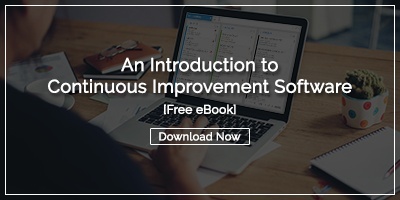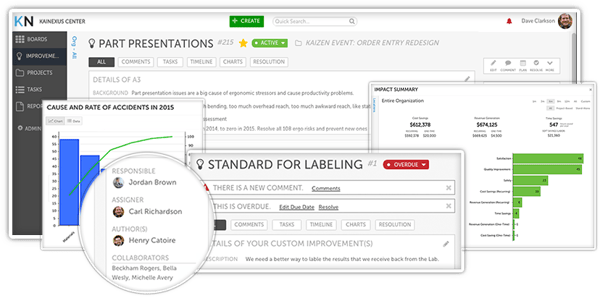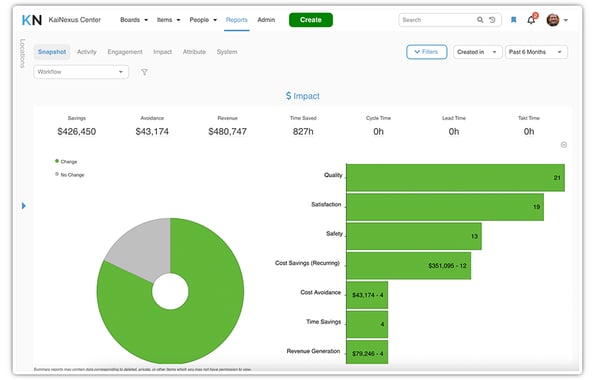 Even before the coronavirus outbreak (resources) changed the way that many people work, the move to online employee engagement and continuous improvement tools online was well underway. Remote work was popular well before it was mandatory, and there are a ton of benefits to cloud-based software. People can get to it from anywhere, the vendor takes responsibility for updates and maintenance, and users get instant access to new features.
Even before the coronavirus outbreak (resources) changed the way that many people work, the move to online employee engagement and continuous improvement tools online was well underway. Remote work was popular well before it was mandatory, and there are a ton of benefits to cloud-based software. People can get to it from anywhere, the vendor takes responsibility for updates and maintenance, and users get instant access to new features.
The employee suggestion box is one such improvement technique that is now available as an online app. The question we get from leaders in every sector, is, does moving the suggestion box online result in more ideas and more completed improvement projects?
Unfortunately, customers who have come to us after giving simple online suggestion boxes a try have found the answer to be no. They typically see a bump in the number of suggestions at first because some of the barriers to submitting suggestions are removed, and people like trying something new. But soon, people find the link or icon as easy to ignore as the physical box. The number of suggestions trails off, and improvement flatlines.
Why is this so common?
If you chat with front-line employees, you’ll find that there are a few common reasons why employees don’t engage with suggestion boxes on the wall or in the cloud.
The Challenges
Many people don’t know what types of suggestions leadership wants. Asking for recommendations in the absence of aligned goals and objectives puts employees in the position of guessing what they should be thinking about. The result is either silence or suggestions that don’t address urgent needs and priorities.
Another reason people don’t engage with some suggestion systems is that they don’t believe their ideas will be considered. Most of us have given careful thought to an idea that would improve a process or delight customers, only to have it ignored. That’s a painful experience, and if it happens enough, we all just stop putting ourselves through it.
The last common reason we hear from process operators is that there’s just no incentive to make suggestions. This type of engagement isn’t part of the employee’s performance evaluation, and people who engage are not recognized, so why bother? These days, most people are already stretched thin, so taking on one more task is something people avoid if at all possible.
Is There Hope?
Having said all of that, we know that there are people in your organization who have creative ideas for reducing waste, improving efficiency, eliminating defects, and delighting customers in their heads as we speak. Fortunately, there’s a more effective way to get them out than moving your suggestion box online.
Let go of the idea of a suggestion box and instead consider improvement management software that serves as a platform for a suggestion system. Instead of putting ideas into a “box,” team members put their ideas into an engine for engagement and action and tangible results ensue. That new paradigm changes everything. Here’s how it works.
Features of a Functional Suggestion System
Align: Leaders meet to determine the “True North” of the organization. It includes the vision, strategy, and annual goals. Those targets are cascaded down through each level of the organization until every person knows how their work is related to overall success. All employees from the C-suite to the front-line are tasked and empowered with finding incremental ways to move closer to the breakthrough objectives.
Capture: Once goals are aligned, you can implement your improvement platform to allows employees to offer their suggestions for improvement that are synced with the goals. Ideas are organized by type, department, location, or any other criteria that are relevant for your teams.

Evaluate: Every idea is reviewed by a supervisor to consider if it should be implemented and how it fits in terms of priority. Employees receive feedback, even if the suggestion isn’t selected for immediate action. For those ideas that need further refinement and clarification, a process called Catchball can be used.
Act: The improvement management software must support implementing ideas by allowing users to assign tasks, upload related documents, manage dates, and work closely with others. Ideally, it should include notifications and alerts to keep everyone up to speed on the process of the project.
Monitor: Once you have an improvement platform in place, your team will have many employee-suggested projects underway at any given time. The system will make it easy for everyone to visualize the status of each project and know early on if they need to jump in to remove a roadblock or garner additional resources.
Measure: Once a suggestion has been rolled out, the online suggestion system should provide reporting that shows the results of improvement over time. Improvement is measured in cost savings, quality improvement, customer satisfaction, increased revenue, or any other metric that is a vital indicator of the health of your business.
Broadcast Success: Employees who engage and contribute to positive change should be recognized. When individuals are shown gratitude, they tend to get even more involved, and so do their peers.
Improvement software that creates a suggestion engine isn’t as simple as putting up an online version of a suggestion box, but change that matters is worth the effort. After all, if you want to harness the power of your brightest minds, you’ll need more than a box.


Add a Comment